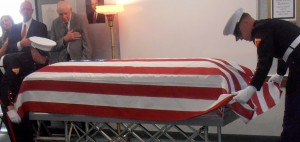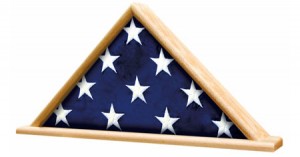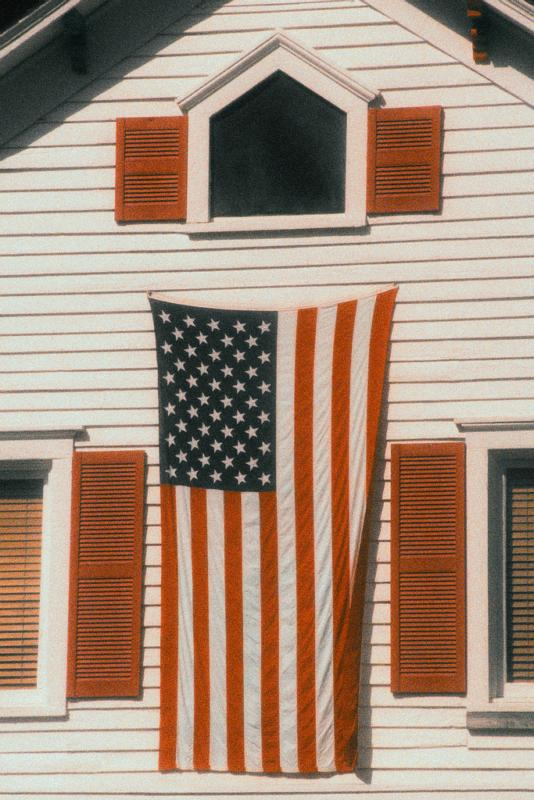Is it proper to display a flag which draped a casket?
Although some people feel that a flag used to drape a casket should not be unfolded after it has been folded at graveside, it is actually proper—if desired—to unfold and then display a burial flag. It is entirely up to the next of kin who received the flag at the burial.
Burial flags, also called internment flags, are furnished by the government to drape caskets of veterans and those who die on active duty. The folding and presentation of internment flags at the graveside have become an important part of honoring those who have served in the military. This is especially true for those killed defending our nation.
Often these folded flags are placed in triangular frames or shadow boxes for display; however, there is nothing in the U.S. Flag Code or in government regulations prohibiting burial flags from being unfolded and displayed.
Nevertheless, there are some things that should be considered when displaying internment flags:
- Internment flags are larger than the flags most private individuals fly at their homes. Measuring 5 feet by 9 ½ feet, burial flags may be unwieldy for a single person to handle. A stationary flagpole would need to be at least 20 to 25 feet tall to be tall enough to fly a burial flag.
- If it is desired to display a burial flag and an appropriate flagpole is not available, the flag may be hung flat on a wall or building. The union of stars, whether the flag is hung with the stripes running horizontally or vertically, should be in the observer’s upper left hand corner.
- A burial flag may be made of cotton bunting and thus may not be an “all weather flag.” Nylon and polyester flags are colorfast and dry more quickly if they become wet in a storm. Cotton flags do not withstand bad weather as well, and they take longer to dry out.
- If any flag is flown regularly, it will fade or wear out. If it is desired to preserve a burial flag as a keepsake, it may be better to fly it rarely or not at all.
- Although even children are taught in scouting programs how to fold the flag, a burial flag is not easy to fold correctly. Military honor guards and veterans organization, who may perform this duty at graveside, have normally practiced a great deal to know how to fold burial flags precisely.
- A burial flag should be “documented” to record its story. If it is placed in a case, a short description of the flag’s use can be written up and glued to the back of the case. For example it might read, “This flag draped the casket of Lieutenant Colonel John Smith, United States Army (Retired) during his funeral conducted on July 20, 2012.” A similar short explanation of the burial flag’s use could also be written on the flag’s canvas heading using a laundry marker.
Whether a burial flag is displayed folded in a special case or unfolded and flown, it is appropriate to honor and remember those who have served in our armed forces by displaying their flags.



